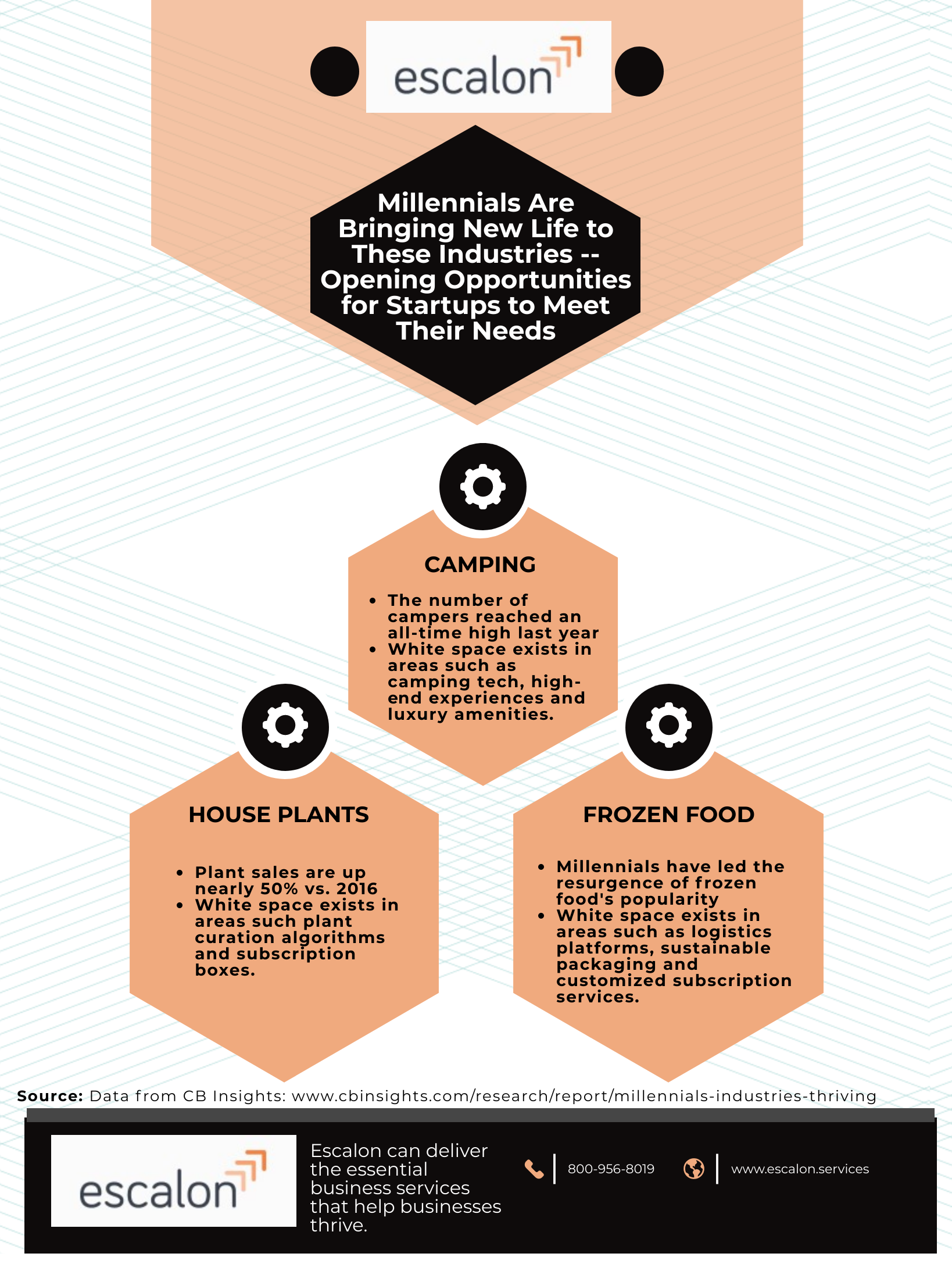If you heard that Americans in their 20s and 30s are bending over backward to go camping or to eat frozen food, you might think it’s 1973. But these are among the most recent millennial trends, according to research from CB Insights.
We already know that members of the millennial generation -- those born between 1981 and 1996 -- have unique interests, and the old marketing methods won’t work with this visually-focused demographic. What these consumers enjoy are experiences, wellness and connections -- and many of the trends cropping up around them are centered around those areas.
Today we’re taking a look at a few areas that are poised to thrive, thanks to continued attention from millennials. And although you may not think that verticals like camping and house plants are particularly tech-friendly, there are opportunities to enter these industries to make the lives of millennials easier thanks to tech-based tools.
1. House Plants
If you haven’t had a ficus or philodendron on your desk for a while, then you may be in the minority. Sales of plants are up by almost 50 percent since 2016, the National Gardening Association reports. Not only are sales of individual house plants on the rise, but consumers are spending more on them as well, with average indoor plant spending up to almost $50 last year, compared to just $30 in 2016.
Among the drivers of this trend are millennials’ interest in wellness and a new crop of direct-to-consumer plant businesses that allow easier purchases of house plants. Plus, because nearly three quarters of millennials live in rental properties, they may move more often, and house plants allow for portability.
New outlets are opening for those who want to pick up some house plants, such as subscription services like Horti and Click. “By offering easily available, aesthetically clean and lower-cost house plants, plant retailers of all stripes can better appeal to wellness-minded and urban-dwelling millennials,” CB Insights notes.
Possible white spaces:
Direct-to-consumer plant sales using algorithms based on care levels, climate and appearance; house plant subscription boxes; outsourced house plant sitting services.
2. Camping
Just when it seemed like camping might be a trend that would be taking a back seat to luxury hotels, it’s bouncing back in a big way. Although sales of wholesale camping equipment fell short of $2 billion in 2013, that number rose to over $2.5 billion last year. And almost 80 million US households went camping in 2018, which marks a new high, CB Insights reports.
“Camping experienced aggressive growth from 2014 through 2017 in terms of the sheer number of new camper households, and has been impacted most by the influx of younger and more diverse campers,” Kampgrounds of America said in a recent report about the industry. “As this new group of campers has continued camping, they’ve brought with them a greater deal of enthusiasm, annually taking more trips and spending more nights camping.”
The growth of the industry has led to new opportunities for entrepreneurs to cater to the need for more amenities. “These can help mitigate challenges like finding a campsite, dealing with bugs, and safety,” CB Insights says. Technology plays an important role in this category, and sites like Hipcamp and Campsy have launched to offer campers unique experiences, which range from cave camping to treehouses.
Possible white spaces: Gourmet food delivery for campers; camp lodging apps; luxury camping experiences.
3. Frozen Foods
Once known as “TV dinners,” frozen meals had their heyday decades ago, but sales were waning by the early 2000s. Enter a whole new crop of healthy offerings, featuring such attributes as clean ingredients, gluten-free options, convenience and innovative global flavors.
Sales in the category have been soaring, with items like smoothies, pizza, breakfast meals, waffles and complete meals seeing growth, according to Nielsen data. “Established brands have been freshening their lineups while innovative startups have been launching new concepts, all spurring 26 percent of all U.S. grocery shoppers shopping the aisle more frequently, and 43 percent of millennials buying more frozen items,” said Skip Shaw, CEO of the National Frozen and Refrigerated Foods Association.
This drive toward frozen foods has opened the door for startups to feed the hunger for new technologies. Third-party logistics are essential for getting the foods to stores on time, and opportunities have arisen for meal and grocery delivery firms to capitalize on the interest in the space. In addition, startups like Impossible Foods have been working to develop alternatives to animal-based meat products to deliver additional innovations to the category.
Possible white spaces: Sustainable packaging for frozen foods; subscription services of ethnic foods; apps to create/ship custom-produced frozen foods based on consumer needs; logistical platforms for shipping efficiently.

Author
Neha De
Neha De is a writer and editor with more than 13 years of experience. She has worked on a variety of genres and platforms, including books, magazine articles, blog posts and website copy. She is passionate about producing clear and concise content that is engaging and informative. In her spare time, Neha enjoys dancing, running and spending time with her family.







